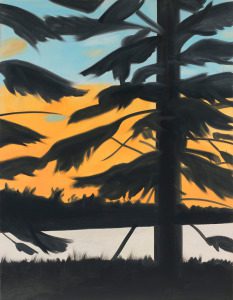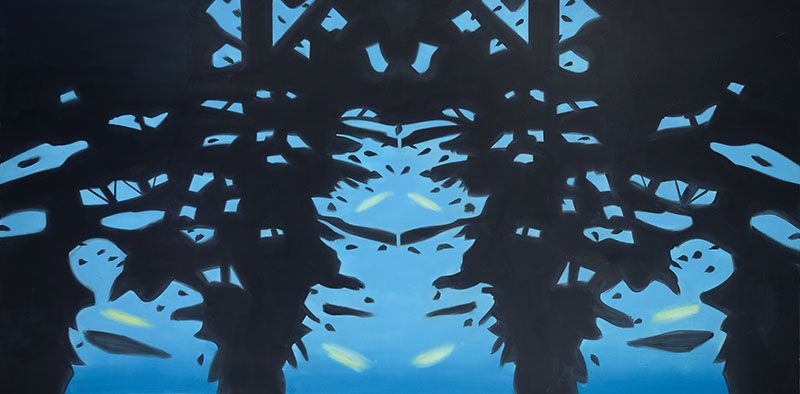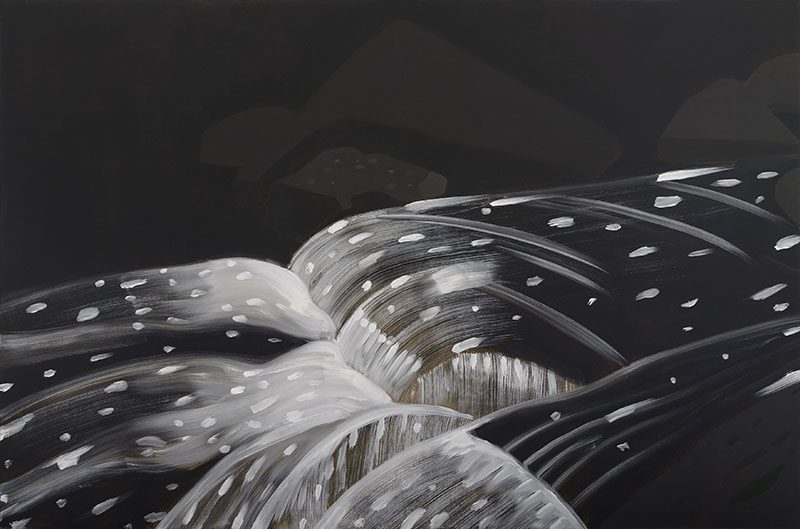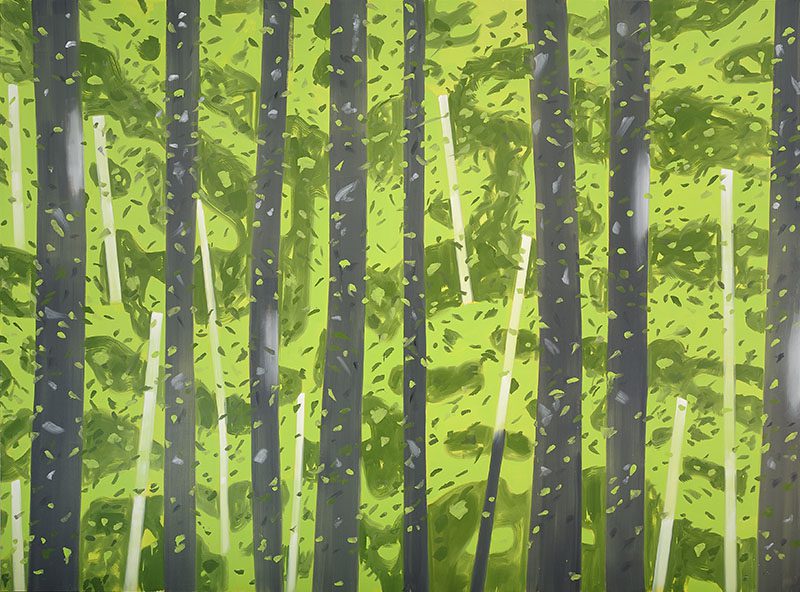ART-PRESENTATION: Alex Katz-This Is Now

Alex Katz has always distanced himself from movements; a figurative painter, he has refuted the principles of abstraction, whilst still being inspired by Pollock’s Action Paintings. Landscape is one of the main themes in the work of Alex Katz, one of the most unique voices in American art. The exhibition “Alex Katz, This Is Now” explores the artist’s approach to this subject over different phases in his career, and spans from the 1980s to his latest paintings of monumental landscape. Using a shallow pictorial space and lean, reductive, but acutely descriptive lines, Katz aims to initiate a conversation about the confluence of perception and awareness, as well as the relationship between art and nature and the nature of the sublime in this contemporary moment.
By Efi Michalarou
Photo: Guggenheim Museum Bilbao Archive
Although best known for his portraits, Katz has painted landscapes both inside the studio and out-of-doors since the beginning of his career. The exhibition “Alex Katz-This Is Now” features 35 landscapes in which Katz utilizes a “grammar of abstraction”, which includes the expansive allover treatment of his canvases, to capture what he calls “the present tense”, or the simultaneity of vision and awareness. Katz describes this moment as an explosive “flash” just before an image comes into focus. In the painting “10:30 am”, for example, Katz transforms the instant moment of seeing a stand of birch trees animated by dappled sunlight into an enveloping, epic experience. The exhibition aims to reveal the fundamental but often unacknowledged role that landscape has played in Katz’s long career. Katz’s monumental landscapes are immersive, contemplative paintings that prompt conversations about the confluence of perception and awareness, the relationship between art and nature, and the nature of the sublime in this contemporary moment. In a 1968 interview, Katz described his paintings of flowers as an extension of the cocktail party scenes he often painted. He remarked that the flowers are “all overlapping volumes”, like the individuals in his figure groupings, which overlap one another as they advance into the pictorial space. Indeed, the fundamental subjects of Katz’s landscape paintings are form, surface, space, and light as they are subsumed in nature. There is a physically dynamic sense of movement in Katz’s landscape paintings akin to dance, inviting the viewer to adapt to the pace of the work according to his or her own frame of mind and emotional bearing. Light and form provide an unexpected syncopation of movement across the surface of his flower paintings. Painted rapidly and assuredly, wet into wet, the flowers oscillate between states of awkwardness and grace typically associated with the human body. Katz’s roses, with their fleshy petals and serrated leaves, are aggressive and fierce, belying the congenial association that flowers typically summon. Works in the “Black Brook” series range in scale from small and intimate to monumental and enveloping. Their subject is a modest stream that runs across Katz’s property in Maine. They often seem to describe thick forest panoramas but actually represent the reflection of surrounding landscapes on the water’s surface. By focusing on the flat, inverted image projected on the surface of the water, Katz obliquely refers to the science of perception in his attempt to capture the “present tense” or “flash of perception” in his work.
Info: Curators: Michael Rooks & Petra Joos, Guggenheim Museum Bilbao, Avenida Abandoibarra 2, Bilbao, Duration: 23/10/15-7/2/16, Days & Hours: Tue-Sun 10:00-20:00, www.guggenheim-bilbao.es






